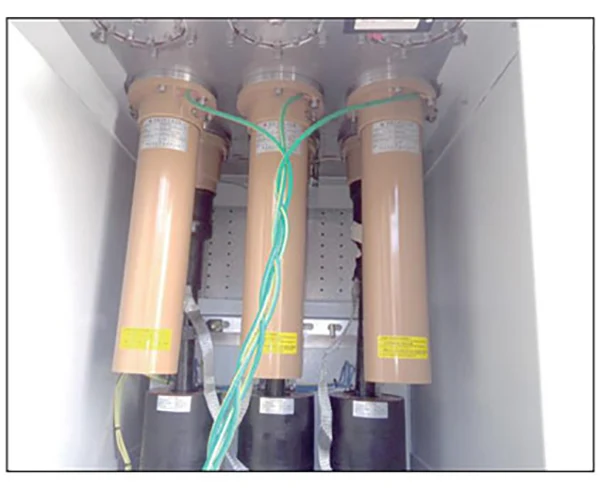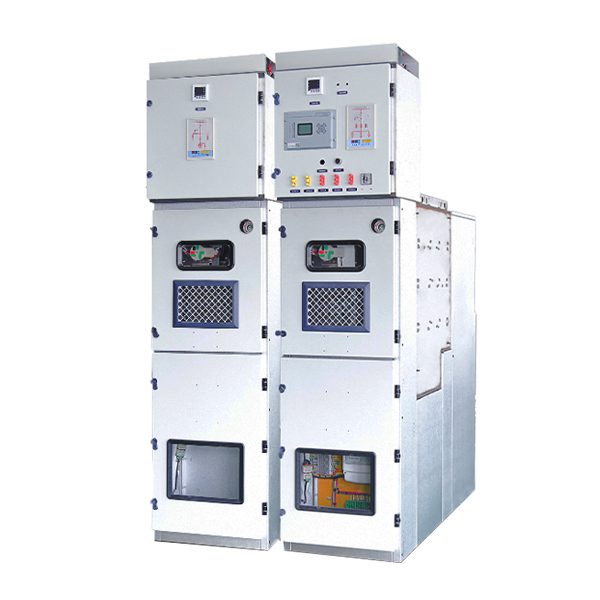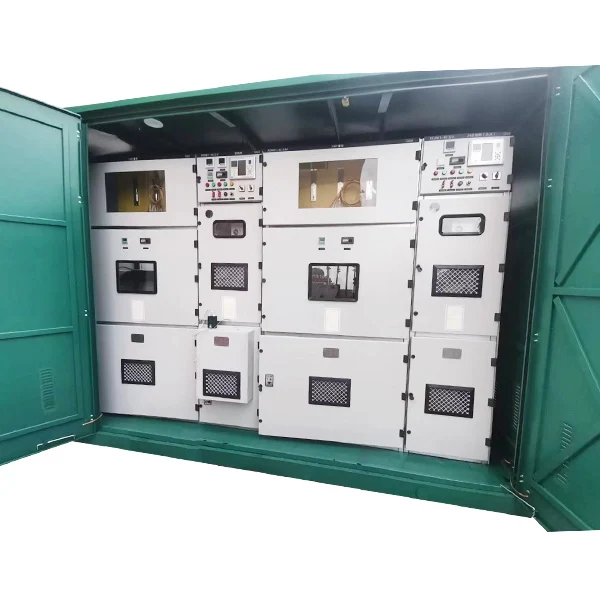40.5KV 1600A High Current High Votage Gis Gas Insulated Switchgear
In recent years, the engineering construction industry has faced increasing complexity due to societal and economic growth, as well as rapid technological advancements. As a result, there is a growing demand for more compact and intelligent switch equipment that requires less maintenance. Domestic and international manufacturers are actively developing 40.5KV 1600A High Current High Votage Gis Gas Insulated Switchgear (C-GIS), also known as medium voltage gas-filled cabinets, which enclose high-voltage components like busbars, circuit breakers, isolating switches, and power cables within a pressure-reduced shell..
Model:40.5KV 1600A inflatable cabinet
Send Inquiry
Product Features
1. By using sulfur hexafluoride gas as an insulating and arc extinguishing medium, the size of the switchgear can be significantly reduced, causing an extra portable and smaller design.
2. The conductive part of the main circuit, which is highly reliable and secure, is sealed in SF6 gas, keeping the high-voltage online conductor enclosed and untouched by outside factors. This makes sure long-lasting safe procedure and high reliability of the devices.
3. There is no threat of electric shock or fire.
4. The switchgear is developed with an independent modular structure, with the air box made from high-precision light weight aluminum plate and can be disassembled. The seclusion switch embraces a straight transmission with three placements. To decrease control relay and circuit confusion, an added control module with virtually 100 PLC points is included for grounding, isolation button, and remote procedures. The device button is modular, attaching opening and closing points with plum bloom get in touches with. This gets rid of the possibility of non-operation in the initial rotary isolation switch and basing button, resolves the concern of unstable and excessive get in touch with resistance in the initial rotating seclusion button, and includes securing and voltage equalization covers on each call's outside to attend to partial discharge issues throughout button breakpoints manufacturing.
5. The gas-insulated switchgear is convenient to use and organize. It can be used as an independent unit and meet various primary wiring needs via combination. Supplying it to the website as devices can reduce on-site installation and enhance dependability.
Execution standards
IEC 62271-200: 2011 High-voltage switchgear and controlgear - Part 200: AC metal-enclosed switchgear and controlgear for rated voltages above 1 kV and up to and including 52 kV
IEC 62271-102:2013 6.2 High-voltage switchgear and controlgear - Part 102: Alternating current disconnectors and earthing switches
IEC 62271-100: 2017.6.2 High-voltage switchgear and controlgear - Part 100: Alternating-current circuit-breakers
GB/T11022-1999 Common technical requirements for high-voltage switchgear and control equipment standards
GB3906-2006 3.6kV~40.5kV AC Metal Enclosed Switchgear and Control Equipment
GB311.1-1997 Insulation Coordination of High Voltage Transmission and Transformation Equipment
GB/T16927.1-1997 High voltage testing technology Part: General test requirements
GB/T16927.2-1997 High voltage testing techniques Part 2: Measurement systems
GB/T7354-2003 Partial discharge measurement
GB1984-1989 AC High Voltage Circuit Breakers
GB3309-1989 Mechanical tests of high-voltage switchgear at room temperature
GB4208-2008 Code for Degree of Protection Provided by Enclosures (IP)
GB12022-2006 Industrial sulfur hexafluoride
GB8905-1988 Guidelines for gas management and inspection in sulfur hexafluoride electrical equipment
GB11023-1989 Test method for sulfur hexafluoride gas sealing of high-voltage switchgear
GB/T13384-1992 General technical requirements for packaging of electromechanical products
GB4207-2003 Solid insulation materials - Determination of relative and resistance to electrical trace index under humid conditions
GB/T14598.3-2006 Electrical relays - Part 5: Insulation of electrical relays
GB/T17626.2-1998 Electromagnetic Compatibility Testing and Measurement Techniques - Electrostatic Discharge Reactance Interference Test
GB/T17626.4-2008 Electromagnetic Compatibility Testing and Measurement Techniques - Electrical Fast Transient Pulse Group Immunity Test
GB/T17626.5-2008 Electromagnetic Compatibility Testing and Measurement Techniques - Surge (Impulse) Immunity Test
GB/T17626.12-1998 Electromagnetic Compatibility Testing and Measurement Techniques - Oscillating Wave Immunity Test
Test Type
◆ Insulation test
◆ Temperature rise test
◆ Loop resistance measurement
◆ Short-time withstand current and peak withstand current tests.
◆ Verification of making and breaking capabilities
◆ Mechanical operation and mechanical characteristic testing tests
◆ Protection level detection
◆ Additional tests on auxiliary and control circuits
◆ Pressure tolerance test for inflatable compartments
◆ Sealing test
◆ Internal arc test
◆ Electromagnetic compatibility test
Basic Scheme
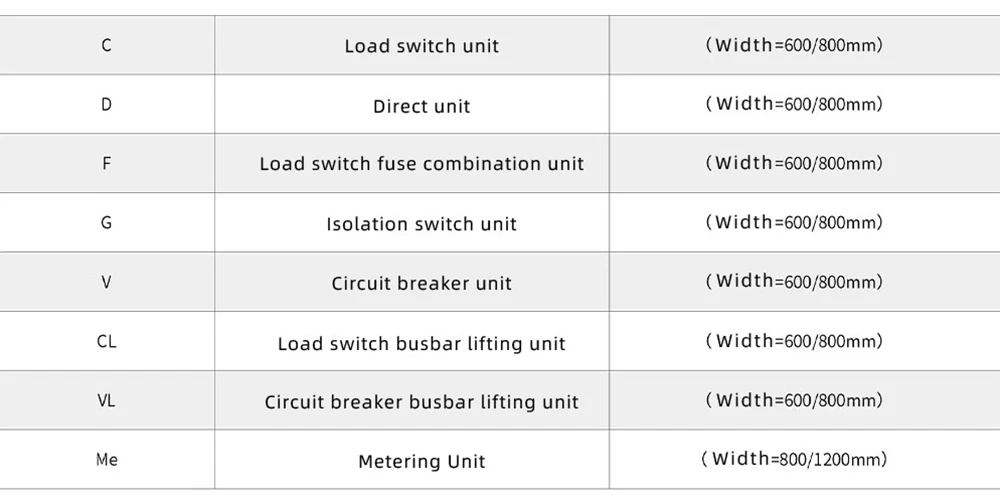

Operation Condition

Technical Parameter
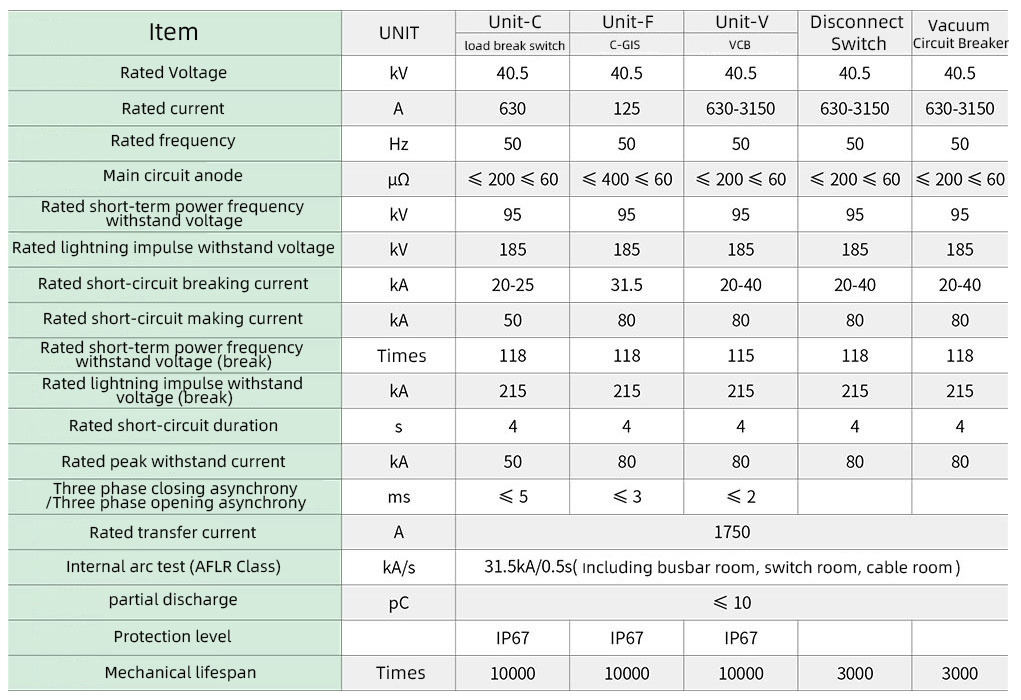
Grounding and Separation
The 40.5KV 1600A High Current High Votage Gis Gas Insulated Switchgear is available in a range of current capacities, including 630A, 1250A, 1600A, 2000A, 2500A, 3150A, and more. The cabinet's size can be tailored to meet specific requirements. The exterior is constructed from aluminum zinc-coated plates, while the gas box is made from high-quality 304 stainless steel plates, welded for durability. The units can be expanded and combined independently, according to design specifications. The cabinet is divided into several rooms, including a secondary control room, busbar room, circuit breaker room, circuit breaker operating mechanism room, and cable room. The cable connection height is up to 700mm, facilitating maintenance and installation. The cabinet also features a comprehensive grounding protection system. The switchgear consists of isolated functional compartments, such as switch rooms, busbar rooms, cable rooms, and secondary circuit channels. Each functional compartment is separated by a grounding metal partition and operates independently.
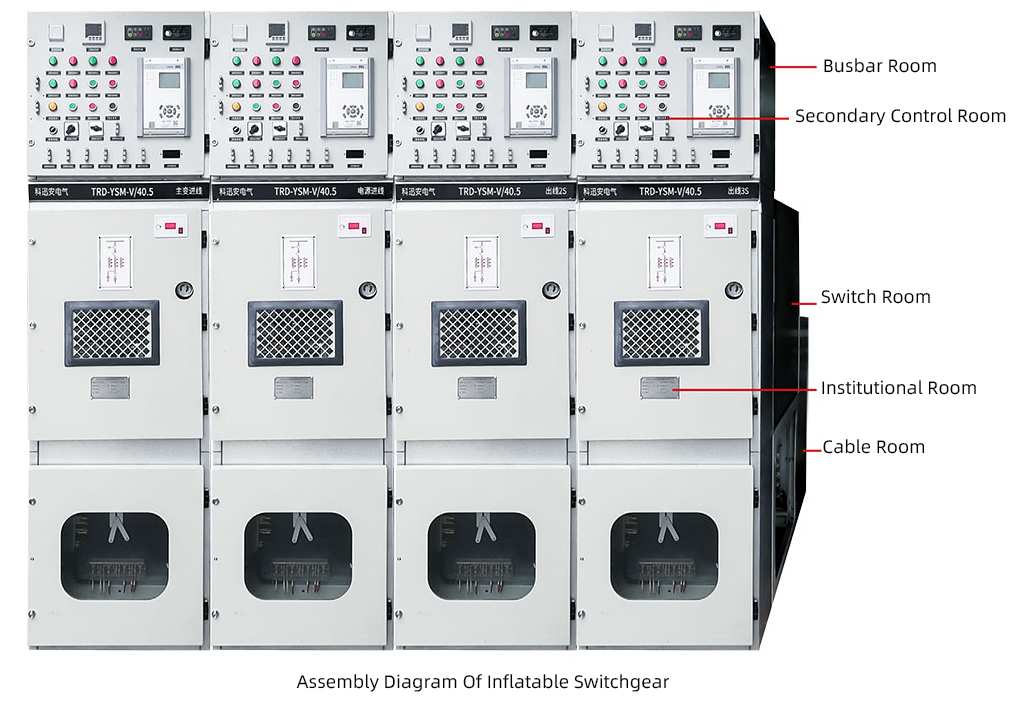
Secondary control room
The cabinet is positioned beneath the secondary control room and includes panels for placing components and supports for securing terminal blocks. Within the secondary control room, various equipment such as wiring terminals, small busbar terminals, and comprehensive protection devices can be set up. These tools facilitate the system to carry out operations like remote control, telemetry, remote signaling, and local monitoring. Circular openings on the left and right side panels and terminals simplify the connection of the cabinet with small busbars.
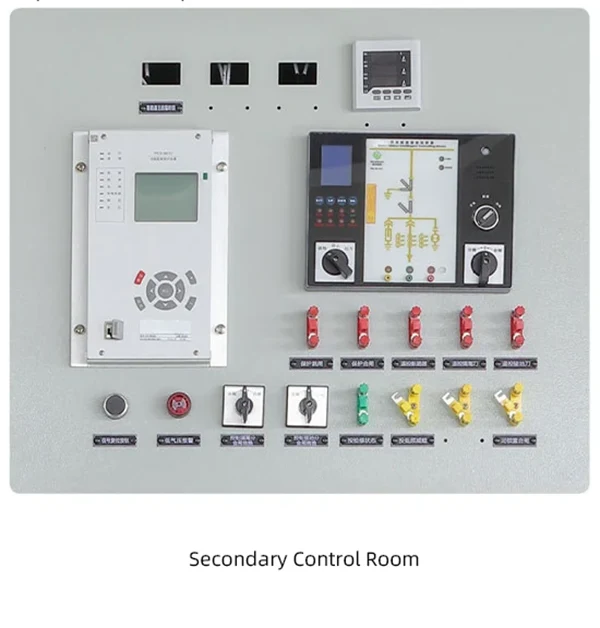
Busbar Compartment
The upper air box houses both the busbar room and the isolation mechanism. When the circuit cabinets are placed on the ground support, they are securely connected to each other through cabinet merging, with busbars on both sides.

Switch Room
The 40.5KV 1600A High Current High Votage Gis Gas Insulated Switchgear boasts a plate-type design, comprising two vertically-aligned chambers that occupy the cabinet's center. The upper chamber houses a three-position isolation switch, while the lower chamber contains a vacuum circuit breaker. The busbar, isolation switch, and circuit breaker are arranged in a vertical configuration, affording the structure a compact footprint. While the single-chamber design is straightforward, cost-effective, and straightforward to produce, its reliability is somewhat compromised due to the proximity of its components. Conversely, the multi-chamber design prioritizes safety by minimizing interference between components and enabling effortless replacement. However, this design necessitates a more intricate manufacturing process, resulting in increased complexity, production challenges, and expense..

Institutional Room
The spring-driven system is located on a level surface, with the isolation and circuit breaker components placed apart from each other. It is connected to the insulation rod of the vacuum arc extinguishing chamber both before and after, streamlining the transfer process. The performance of the mechanism is optimized to match the circuit breaker's operation, leading to lower energy consumption and improved mechanical dependability and adaptability.
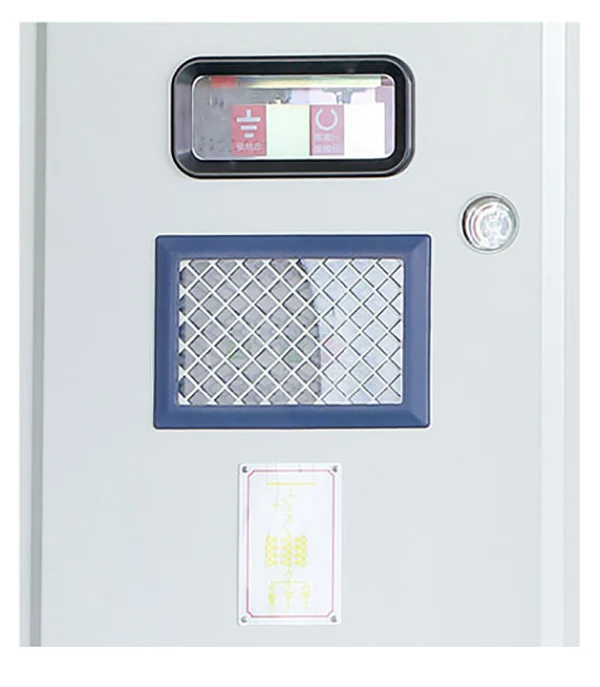
Cable Room
The cabinet is situated above the cable room and features a distinct pressure relief pathway. The distance between the ground and the cable connection terminals can reach up to 700mm. In accordance with regulations, grounding interlocks are installed in the cable room, enabling the installation of two cables and lightning arresters in each circuit. Additionally, the internal cone insertion method is used to connect the incoming and outgoing cables and lightning arresters.
